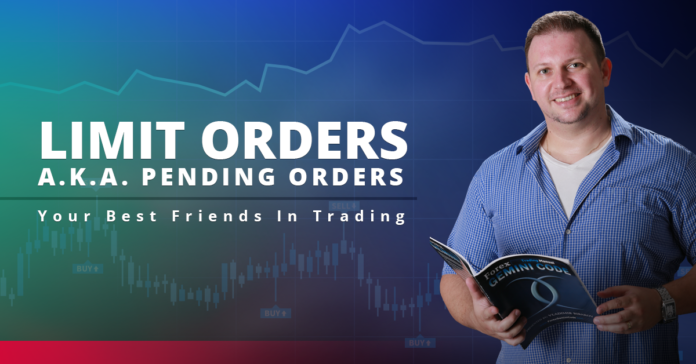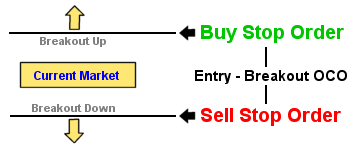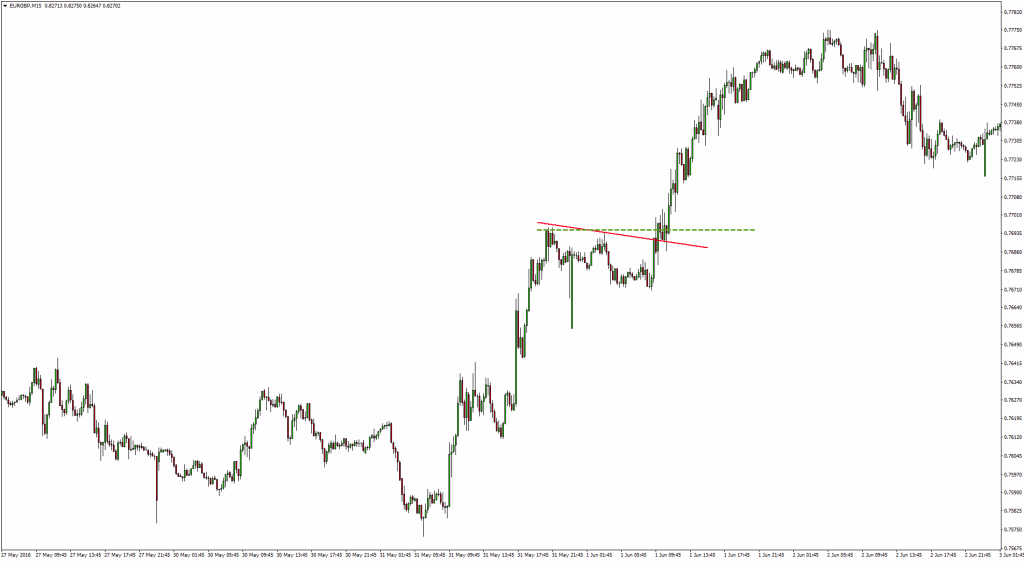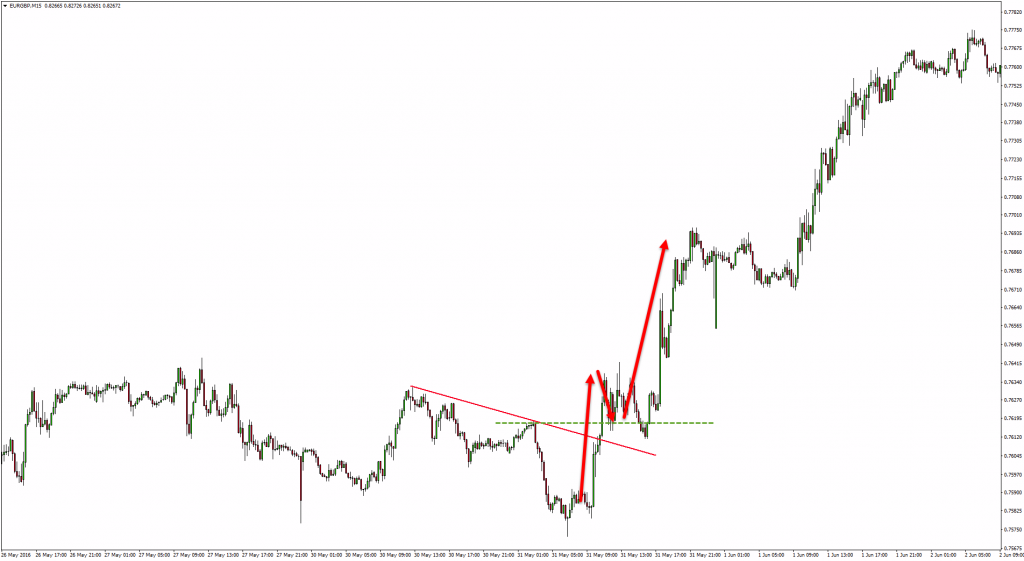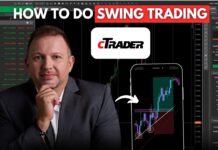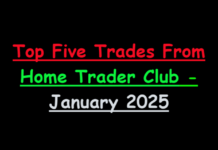
Limit orders – one of the most underestimated weapons in our arsenal that many beginner traders don’t take advantage of. This is how I would put it in a sentence. This is why I would like to dedicate this post to pending order also known as limit orders.
Limit Orders Definition
We can generalize the type of orders into two categories: Market Orders and Limit Orders. First one stands for instant execution. You buy or sell at the current market price hence Market Order. Limit Orders are set above or below the current market price and will be triggered once the price reaches the desired level which makes them extremely useful! There are four types of limit orders – buy above the market price (buy stop), sell above the market price (sell limit), buy below the market price (buy limit) and sell below the market price (sell stop).
These are the four types of limit orders that you are going to find in the MT4 platform. There is however another section of limit orders, more sophisticated, that are not offered inside MT4 – conditional orders. This type of orders take it to the next level as there are certain conditions that need to be met, before the trade is executed. Two very common conditional orders are OCO – order-cancels-order and OSO – order-sends-order.
Now let’s look at each type of order individually.
OCO Orders
What the OCO order would do is cancel the other orders in the group once one of the orders is triggered ( order-cancels-order). This is perfect for range breakouts where you don’t really care which way the price is going to go as long as it is moving.
OSO Orders
An OSO (Order Sends Order) order consists of a primary order that will send one or more secondary orders when the primary order is filled. For example, there is an OSO order consisting of three orders. The primary order 1) is a limit order to buy EURUSD 1 lot, and attached to it are two other orders: 2) a limit order to buy 0.5 lots to buy another instrument and 3) a stop order for 1 lot of the primary instrument (EURUSD) at a price below the limit price for that order. When the primary order is filled, the two additional OSO orders are sent, one that buys additional lots of a related pair and another that sets a stop loss for the primary pair.
Buy Stop Orders
Buy stop orders as explained above would place a buy order above the current market price and the order would be triggered once the price touches this upper level or goes through it.
Let’s assume that you spot an up trend. There is some kind of correction and you are looking to buy. Without getting into too much details, you want to buy once the down trend line and last high are broken. Instead of gluing yourself to the monitor, anticipating the breakout, you could place a buy stop order (green dashed line). Now when the price goes to this level your buy order will be automatically triggered!
Perfect for breakouts.
Moving on to the next one.
Buy Limit Orders
Buy limit orders are perfect for situations where the price for example has broken out of a range but it shot up very quickly. In order to improve your risk:reward ratio ( in other words to have smaller stop loss versus the target) you better wait for a correction and buy at a lower price. This is where buy limit orders come into play!
Let’s assume that you were looking for a buy at the breakout of the trend line. However you missed it for some reason and price is now high above the trend line. Instead of buying at current market price, you can wait for the price to re-test the line and last broken high, and have your buy there which will improve your risk-reward ratio.
Sell Limit Orders
Sell limit orders allow you to sell above the current market price. You may find these types of orders very useful when you expect the price to bounce off of a level (find a top). Example:
Such orders are very useful inside ranges like channel, triangles, wedges etc…
Sell Stop Orders
Sell stop orders are placed below the current market price. There are again multiple ways you can use them. For instance bearish breakout. If your strategy or system works in a way that you would enter with the momentum and not wait for re-tests etc (when high volatility is expected) a sell stop order would be a perfect fit for your needs.
Down trend, correction, we look to sell with the break of the trend line and last low:
Advantages of Limit Orders
As you have probably figured it out already the best and biggest advantage in my opinion is the ability to “guarantee” yourself an entry at the optimal price according to your analysis. Remember that trading is a business of statistics. To make the numbers look better on your performance sheet, use limit orders when possible. Don’t settle for the current market price if you have missed your original entry. There is always another setup and another day. The closer you buy/sell to the support/resistance zones (vertical or horizontal), the smaller your stop loss would be. If you don’t undertand what I mean in the last sentence, accept the challange and figure it out for home work.
Open your chart and look at the price action. Think how you can improve your current strategy if it allows you to use limit orders.
For higher time frame traders, limit orders could be the key to almost no time in front of the PC. If you are trading D1 and H4 charts, at most you will have to check the charts 3-4 times a day (every 4 hours). The truth is, once you master your method and you have setup in mind, it will take you exactly 5 minutes to catch up with the updates. So yes limit orders will save you time!
Disadvantages of Limit Orders
I have put quotes around guarantee above, as there are no 100% guarantees in life, and forex is not an exception. Generally speaking it will give you a better price but in high volatility moments the order may not be filled at the price specified. This is called slippage and you will usually notice it during news releases or some other major event that shakes the market.
Another disadvantage of a limit order is that you may actually miss the trade. That applies mostly to the buy and sell limit order when you expect the price to correct after the initial strong move in order to get better price. In reality we don’t always get that pullback as deep as we want it and sometimes we miss the trade. But let me tell you right now: You better miss the trade while waiting for better price, rather than entering at market price with awful risk:reward ratio and ending up with a loss at the end. No profit/no loss is better than a loss!
What other advantages/disadvantages can you think of when it comes to limit orders? Please do share your opinion below.
Have an amazing day/evening! And don’t forget to hit the Like/Share buttons!
Yours,
Vladimir

